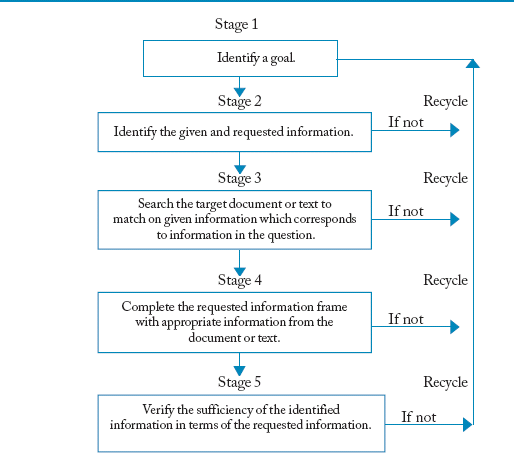Reading tasks for these surveys were developed to represent a broad range of purposes for which students and adults read continuous and noncontinuous texts in both school and nonschool settings. To identify the variables contributing to task difficulty in each of the literacy domains, Kirsch and Mosenthal (Kirsch et al., 1998; Kirsch and Mosenthal, 1990) began by modeling the processes required to complete prose, document, and quantitative tasks in the literacy assessments. This model is shown in Figure 1 and grew out of earlier exploratory work (Fisher, 1981; Guthrie, 1988; Kirsch and Guthrie, 1984b).
In the first step, readers identify a goal or purpose for searching and processing a text or document. In a test or an instructional situation, questions and directives determine the primary purpose for interacting with a text or document, and therefore also determine the information that readers must process in order to complete a cognitive activity. In open-ended tasks, the reader's goal is to identify information in the text that meets the conditions set forth in the question or directive. In multiple-choice tasks, the reader's goal is to identify information in the text that meets the conditions set forth in the question or directive and then to select the best choice from a list of options (Kirsch and Mosenthal, 1994).
Figure 1
A model of prose and document processing in reading
